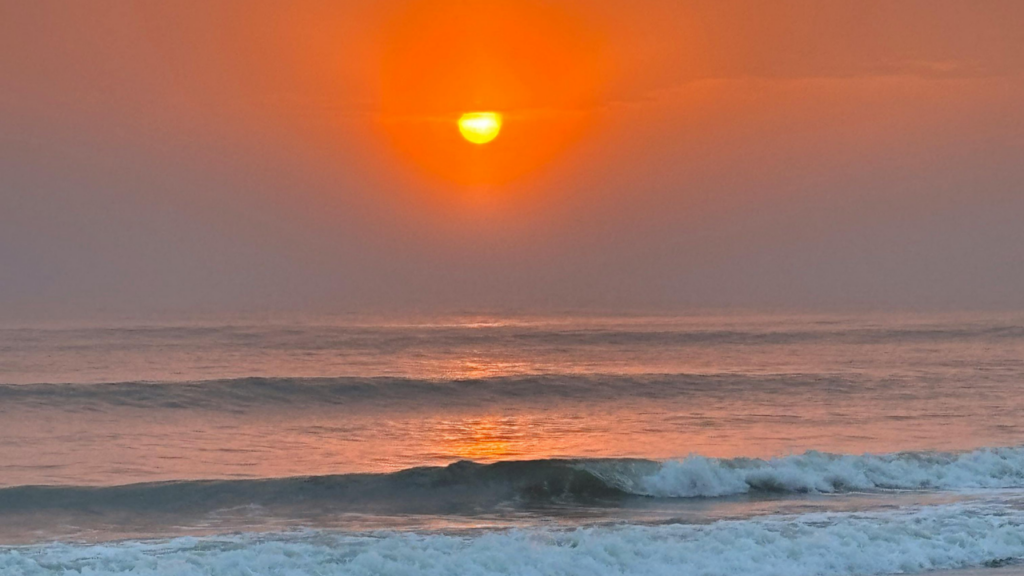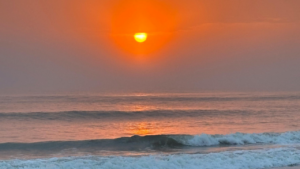For families raising children with autism in the Hampton Roads area, a day at Virginia Beach can represent both a wonderful opportunity and a significant challenge. The unique sensory environment of the beach—with its endless visual expanse, the rhythm of crashing waves, the feel of sand between toes, and the smell of salt air—can be simultaneously therapeutic and overwhelming.
Many parents express valid concerns about potential sensory overload, unpredictable behaviors in public spaces, or the challenges of transitions and unexpected changes that often come with beach outings. These concerns are legitimate and deserve acknowledgment.
Yet the coastal experiences available in Virginia Beach also offer remarkable sensory benefits when properly managed. The natural sensory input of beaches can provide the kind of deep pressure and proprioceptive feedback that many children with autism find regulating. Water play can be calming, and the open space allows for freedom of movement that may be restricted in other public settings.
With thoughtful planning and preparation, the abundant beaches of our region can become accessible, enjoyable spaces for your entire family.
Best Beaches in Virginia Beach Area for Autism Families
Not all beaches in our region offer the same experience. Here are some particularly autism-friendly options:
Sandbridge Beach
- Why it works: Less crowded than the main oceanfront, with a relaxed neighborhood feel
- Amenities: Public restrooms, outdoor showers, and paid municipal parking ($4–$7/day in peak season)
- Special considerations: Fewer lifeguard stands than the main Oceanfront, so best for families whose children don’t wander
First Landing State Park Beach (Cape Henry)
- Why it works: Calmer waters on the Chesapeake Bay side, more secluded areas
- Amenities: Clean restrooms, picnic areas, shaded spots, and nature trails
- Special considerations: Requires a small entrance fee, but the extra amenities make it worthwhile
Chicks Beach (Chesapeake Beach)
- Why it works: Gentler waves, shallow water, and generally quieter atmosphere
- Amenities: Free street parking, some restroom facilities
- Special considerations: More limited facilities; dogs allowed only before 10 AM and after 6 PM between the Friday before Memorial Day and Labor Day
Little Island Park (Sandbridge)
- Why it works: Combines a playground with beach access, providing structured options
- Amenities: Modern restrooms, picnic shelters, fishing pier, playground
- Special considerations: Can get crowded on weekends, but weekday mornings are usually quiet
Optimal Timing to Avoid Crowds
Strategic timing can make the difference between a successful beach day and a challenging one:
Best Times of Day
- Early morning (7:00-9:30 AM): Beaches are nearly empty, temperatures are cooler, and lighting is less intense
- Dinner time (5:00-7:00 PM): Many families have left for the day, but there’s still plenty of daylight in summer months
Best Days of the Week
- Tuesdays and Wednesdays: Typically the least crowded weekdays
- Sundays after 3:00 PM: Many weekend visitors are heading home
Seasonal Considerations
- Late May and early June: The water is warming up, but tourist season hasn’t fully started
- Weekdays in September: School is back in session, but beach weather often remains pleasant
Special Local Knowledge
- Avoid holiday weekends completely: Memorial Day, Fourth of July, and Labor Day bring extreme crowds
- Check the local event calendar: Avoid special events like the Neptune Festival or air shows, which draw large crowds
Essential Items for a Sensory-Friendly Beach Kit
Prepare a specialized beach kit with these items to help manage sensory needs:
Sensory Regulation Tools
- Noise-canceling headphones or earplugs
- Sunglasses (consider wraparound styles for children who dislike things touching their face)
- Weighted lap pad or compression vest
- Favorite fidget toys in a waterproof container
- Comfort items from home
Beach-Specific Sensory Supports
- Beach tent or umbrella for shade and visual boundary
- Beach chairs with canopies for children who need enclosed spaces
- Sensory-friendly sunscreen (test at home first for sensory reactions)
- Cooling towels for temperature regulation
- Handheld misting fan
Specialized Beach Equipment
- Beach wheelchair rental (available at some Virginia Beach locations during summer months)
- Swim vests or life jackets (even for shallow water)
- Beach shoes that can stay on in the water for children sensitive to sand
- Pop-up privacy tent for changing or calming space
- Sand-resistant blanket
Food and Hydration
- Familiar snacks from home in abundance
- Frozen water bottles that thaw throughout the day
- Cooling lunch bag with preferred foods
- Bendable straws and familiar cups
Preparing Children through Social Stories about Virginia Beach
Preparation through social stories can significantly reduce anxiety about new experiences:
Create a Personalized Virginia Beach Social Story
- Use actual photos of the specific beach you’ll visit
- Include images of your family enjoying beach activities
- Detail the sequence of events from arrival to departure
- Describe potential sensory experiences honestly
- Emphasize coping strategies and break options
Key Elements to Include
- What the parking area looks like
- The path to the beach
- Bathroom locations and what they look like
- The lifeguard stands and what lifeguards do
- The sounds you might hear (seagulls, waves, people)
- The feeling of sand and options for avoiding it if needed
- The temperature and feeling of the water
- What to do if you feel overwhelmed
Local Resources for Social Story Creation
- The Virginia Beach Public Library offers free printing services for educational materials
- The local Autism Society chapter has pre-made social stories about regional beaches
- Local therapists can help customize stories for your child’s specific needs
Managing Specific Sensory Challenges
Sand Challenges
- Create a sand-free zone using fitted sheets pulled up with weights in the corners
- Bring a small inflatable pool to fill with water for sand-free water play
- Use baby powder to remove dry sand from skin more comfortably
- Consider beach wheelchairs for children who cannot tolerate walking on sand
- Provide beach shoes that can be worn in the water
Wave and Water Challenges
- Start with water play using buckets at the shoreline before entering the ocean
- Visit during low tide when waters are calmer (check local tide charts)
- Consider beaches on the Chesapeake Bay side with gentler waves
- Use weighted swim vests for added proprioceptive input
- Create visual markers for how deep is safe to go
Sun and Heat Challenges
- Schedule visits during cooler parts of the day
- Use cooling vests or neck wraps
- Create a dedicated shaded space as a retreat
- Bring battery-operated fans
- Plan water misting breaks
Noise Challenges
- Provide noise-canceling headphones
- Choose less populated beach areas
- Create a sound barrier with your beach setup facing away from crowds
- Use white noise apps with earbuds to mask unpredictable beach sounds
- Take noise breaks in the car if needed
Strategies for Successful Transitions
Transitions to and from the beach can be particularly challenging:
Preparing for Arrival
- Drive by the beach the day before if possible
- Review your social story again before leaving home
- Use a visual schedule for the beach day routine
- Pack the car the night before
- Allow extra time for a slow, unpressured approach to the water
During the Visit
- Use visual timers to signal transition times
- Provide 10, 5, and 1-minute warnings before changes
- Consider using token systems (five more waves, three more sand castles)
- Take photos during activities to create a visual memory book
- Have a designated “break spot” away from the main beach area
Preparing for Departure
- Begin talking about leaving well before it’s time to go
- Use first-then language: “First we pack up, then we get ice cream”
- Create a departure routine that becomes a tradition
- Allow for a gradual transition (sitting on towel, then shoes on, then packing)
- End on a positive note with a small reward or tradition
Local Beach Regulations Families Should Know
Understanding local rules helps avoid unexpected challenges:
Virginia Beach Oceanfront Rules
- No dogs on the beach from Memorial Day to Labor Day between 10 AM and 6 PM
- No glass containers
- No alcohol
- Tents must be 10’x10′ or smaller
- Holes dug in sand must be filled before leaving
- Lifeguards are on duty from mid-May through September
Sandbridge-Specific Rules
- No dogs allowed on the beach from 10 AM to 6 PM during summer months
- Limited parking, arrive early
- No public address systems or amplified music
Chesapeake Beach Rules
- Dogs are allowed year-round if on a leash outside the 10 AM–6 PM summer restriction
- No fires or grills on the beach
- Limited facilities, bring what you need
Accessibility Information
- Beach wheelchairs are available for free loan at the 24th Street, 17th Street, and 26th Street beaches (call Parks & Recreation at 757-385-4461 to reserve)
- All public restrooms at the Oceanfront have accessible stalls
- The Grommet Island Park at 2nd Street has accessible playground equipment
Building Success Over Time
Remember that beach visits, like many experiences, may take practice and repeated exposure:
- Start with short visits of 30-60 minutes and gradually increase
- Consider weekday evening visits for first exposures when beaches are quieter
- Celebrate successes, no matter how small
- Document what works for future visits
- Join local autism parent groups to plan group beach outings for peer support
Beach days can become a treasured part of your family’s Hampton Roads experience with the right preparation and mindset. Each successful visit builds confidence and creates positive memories that can last a lifetime.
The Norfolk Autism Center is available to provide personalized strategies for community integration, including beach outings tailored to your child’s specific needs. Contact us at (757) 777-3229 or visit our center at 152 Burnetts Way, Suffolk, VA 23434 for individualized support in accessing all the natural beauty our coastal region has to offer.




